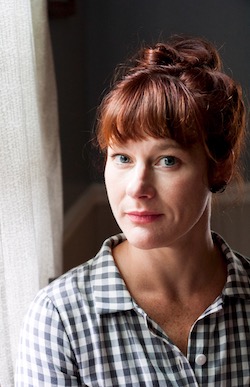Description
Vivid explorations of cryogenics, lion baiting, iDollators, dodo birds, SpaceX, and more populate The Art of Perpetuation, a poignant new collection of lyric essays from Alison Powell that troubles the boundaries between human and animal, living and dead, man and woman, adult and child. These nine whip-smart essays juxtapose personal narrative—memories of the author’s childhood growing up in southern Indiana and experiences as a mother of two—with scientific, historical, and cultural narrative. Throughout the collection, Powell seeks to unearth, to peel back, to lay bare: “To pry something out of someone, the meat of a walnut from its enamel-like shell, is an excavation—to uncover a lie, an infidelity.” Dizzying, fragmentary, and provocative, Powell’s lyrical investigations dig in deep, coming up for air only to expose the meaningless of naming in a world obsessed with self-perpetuation. “To say a poem is like a body is to say one’s self is a machine. To say a body is erasable is to say extinction is a temperate clicking…. And like that, with one hand on the glass and one gloved hand inside the mouth of the woolly rhino, you have done it.”
FROM “MISSING FILE #1: WOOLLY RHINOCEROS / ANCIENT CAVITY TOOTH”
An exciting development: as the large ice sheets of Siberia thaw, well-preserved remains of giant prehistoric monsters will reveal themselves. Let us hope the paleontologists are alert with their tools. When the water trickles out of the bath, the bright-colored toys are scattered. I am already trying to clothe the child and warm the milk. I am “forward-thinking,” a “multitasker,” a good worker. Now we do not need to call soldiers to lift the massive bodies as we have sophisticated machines. We can lift the mammoth with only curiosity and propellers. Pin Hole Cave Man was found in 1928 by archaeologist A.L. Armstrong, who described the engraving as “a masked human figure in the act of dancing a ceremonial dance.” He did not say why the figure was dancing, if he had just finished dinner, if he was making a house from the bones, if he made the house for his children, who gathered; if the man, tired as he was from his hunting, worked late into the night, scraping the keratin from the bloody horn and presented it to his daughter the next day as toy, as object of safety, sharp point, way to call for help.


 © Lisa Wolf Smith
© Lisa Wolf Smith 

